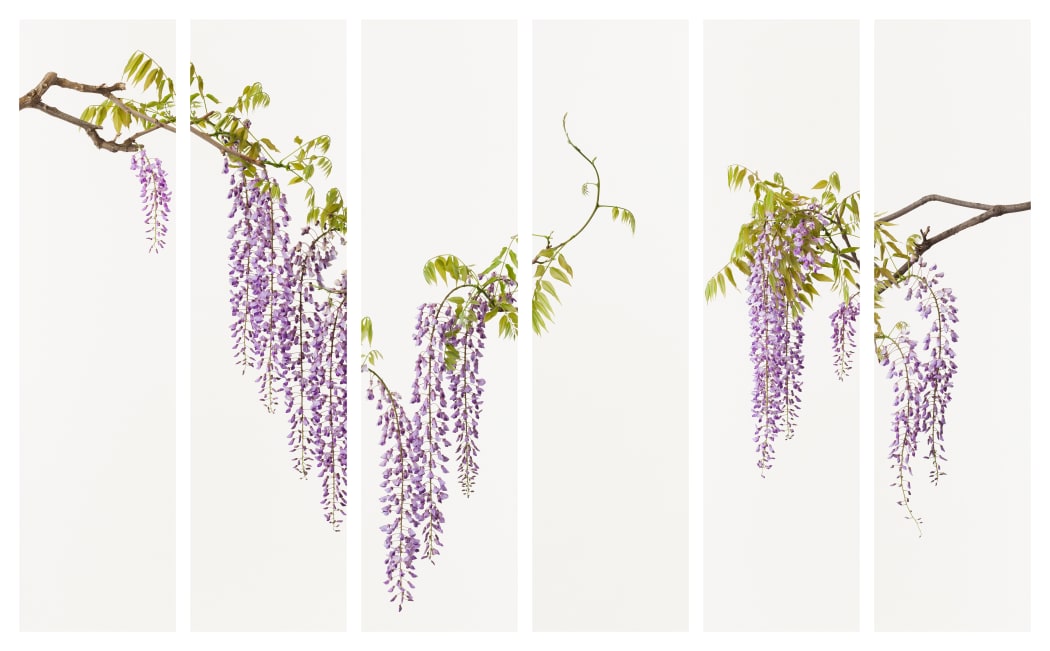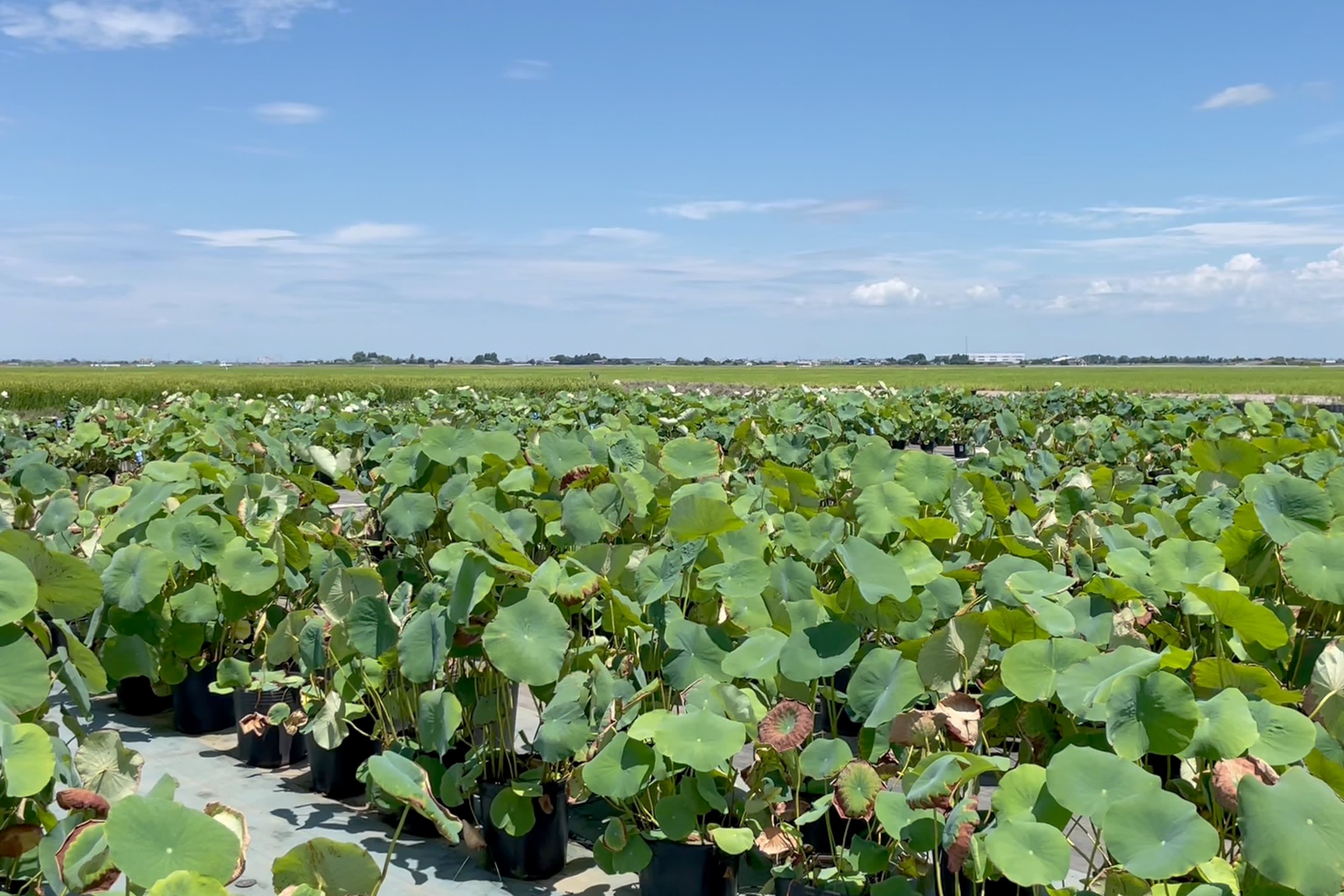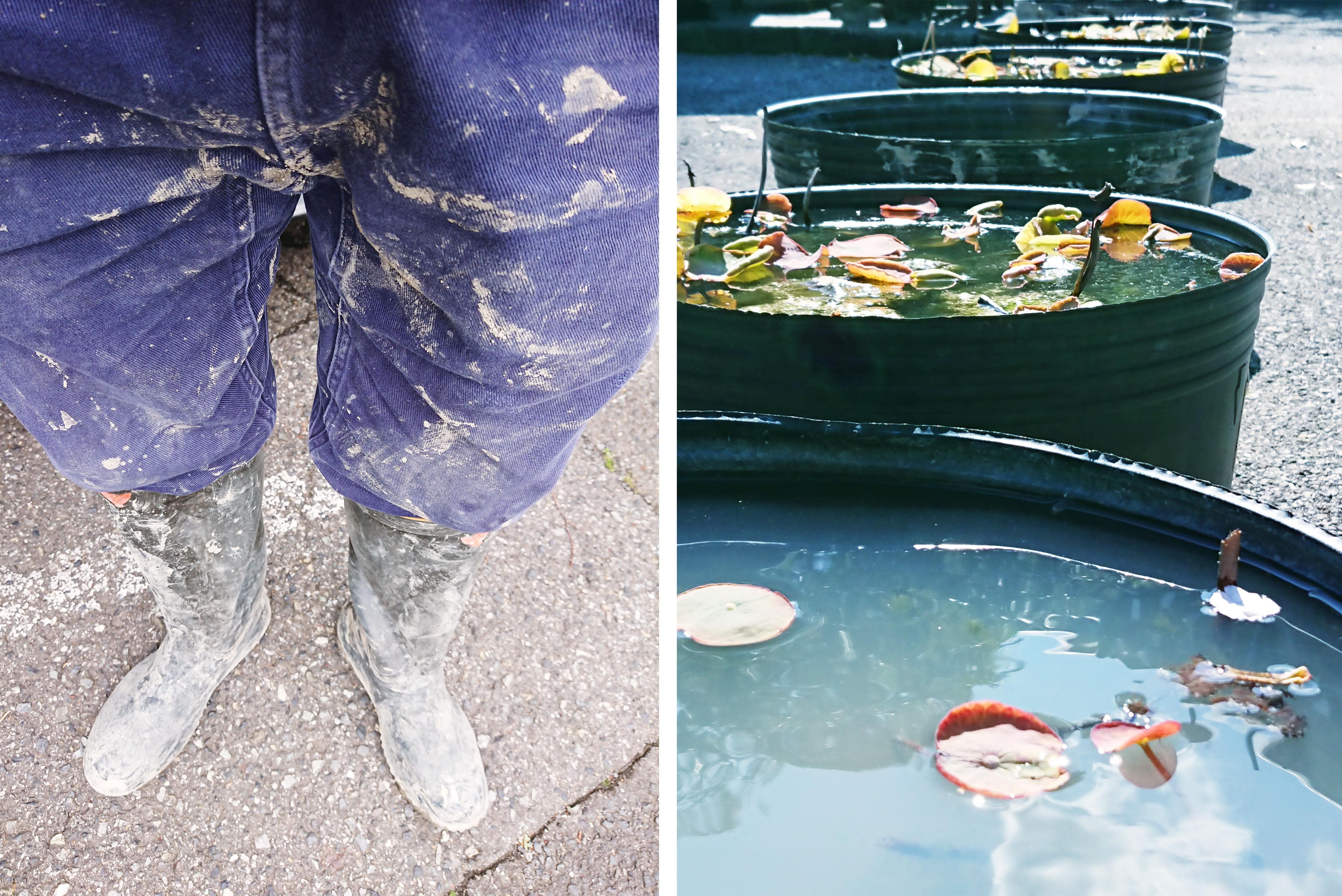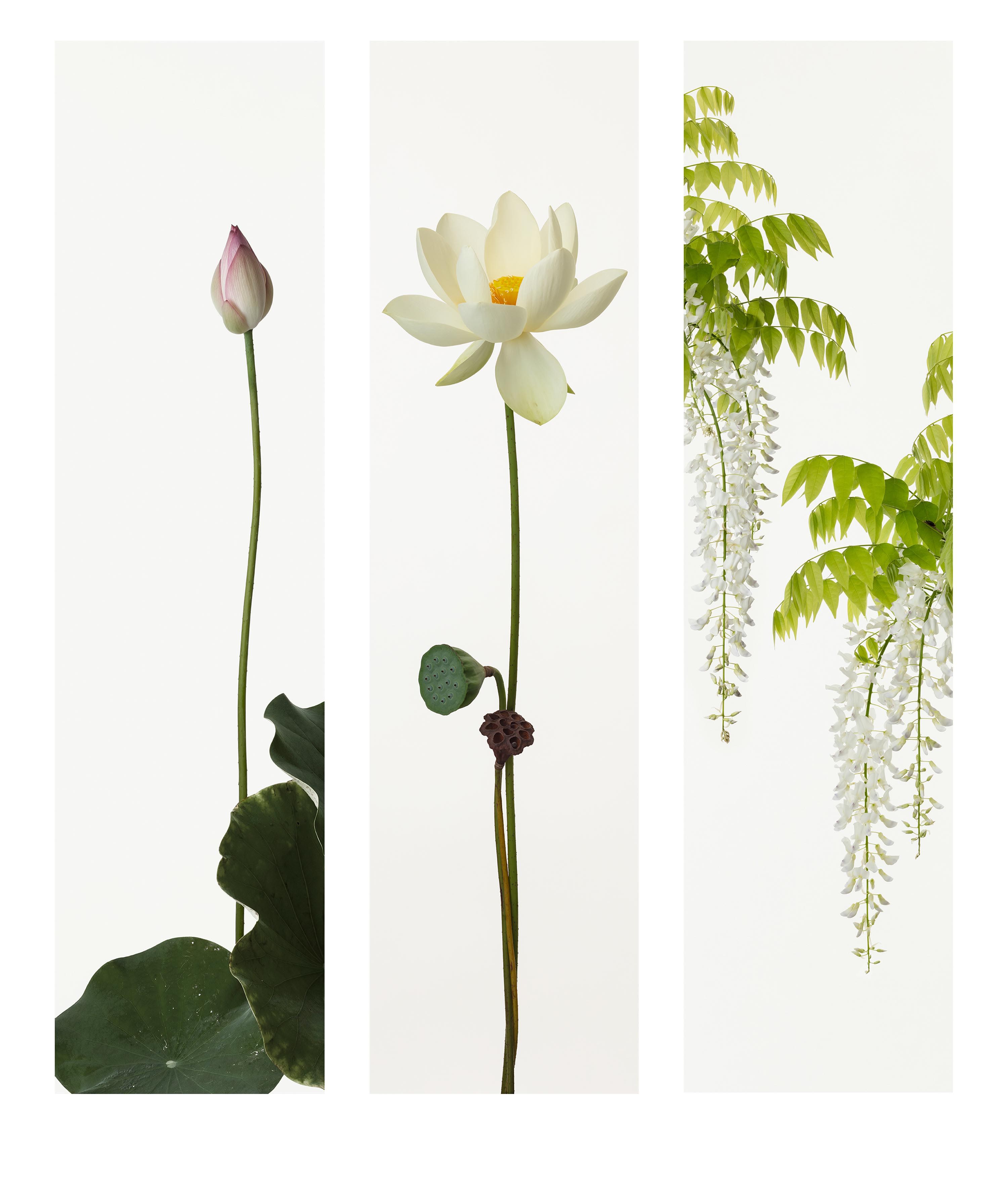
"Fuji" (藤) Wisteria 5, 2023 by Takashi Tomo-oka
Tomo-oka, who initially aspired to become a painter, has found a home in the pictorialism and classical techniques of photography. He continues to create photographic works featuring plants that are deeply connected to his family background.
His work exhibits a painterly quality and a tension reminiscent of portraiture. Tomooka not only grows plants himself but also collaborates with sellers and farmers. He holds profound respect and love for plants in their natural state, which he conveys beautifully through his photographs.
In this interview, we asked Tomooka, whose appearance at AIPAD 2024 will be his first at an art fair, about his history and his approach to his artwork.

"Tsubaki" (椿) Camelia 4, 2016 by Takashi Tomo-oka
Q: Please explain how you got into photography and plants.
My interest in plants was not so much sparked as it was a natural part of my life from childhood to the present. Plants have always been around me and choosing them as subjects was a natural progression. My parents' garden had many plants, such as plum, grape, maple, pine, and chestnut trees. My father was a craftsman who made bamboo baskets, so from a young age, I accompanied him to bamboo groves to gather materials.
In my teens and 20s, I worked at a flower shop and assisted in landscaping at the traditional temples in Kyoto (including Byodoin Temple, Ryoanji Temple, and their stone gardens). I have always been surrounded by plants throughout my life, experiencing various aspects of their care and significance. This has given me a deep understanding of their value and importance.
Q: How about photography?
While studying design at university, I happened to see a photo with a classic technique, which made me more interested in photography's pictorial expression. Seeing the potential of photography, which is completely different from the snapshots and documentaries I had known, I began to think that it is the best way to convey the true strength and beauty of plants.
As a way to make plants look beautiful as they are, I intentionally keep the background empty in my work, use flat lighting, and ensure everything is focused without shadows on the background. These techniques are all connected to achieving a painterly expression.
Q: How do you choose which plants become your subjects for photography?
I photograph the plants I grow myself (there are currently around 200 different species), also I gather from the mountains, and those provided by professional plant growers. I select my subjects by sketching compositions or envisioning images while observing plants. This process helps me identify which plants to capture through photography.

Q: How do you maintain a good relationship with the flower growers you work with?

"This approach aims to showcase the beauty of plant forms and embodies the expression that I personally find most appealing."

From right: "Shirafuji" (白藤) White Wisteria 2, 2019
"Tanumabyakuren" (田沼白蓮) Tanuma White Lotus, 2022
"Kinrinren" (金輪蓮) Golden Lotus 2, 2023
Q: Could you share any common keywords or philosophies that define your career?
I use flat lighting to cast soft shadows on plants and employ a focus that encompasses everything to eliminate depth perception, allowing me to arrange compositions in a painterly manner. This approach aims to showcase the beauty of plant forms and embodies the expression that I personally find most appealing.
My artistic expression integrates elements of plants, painting, design, lighting, and swing and tilt photographic techniques. This style represents a synthesis of everything I have learned and experienced up to this point in my career and I will pursue them in the future as well..
